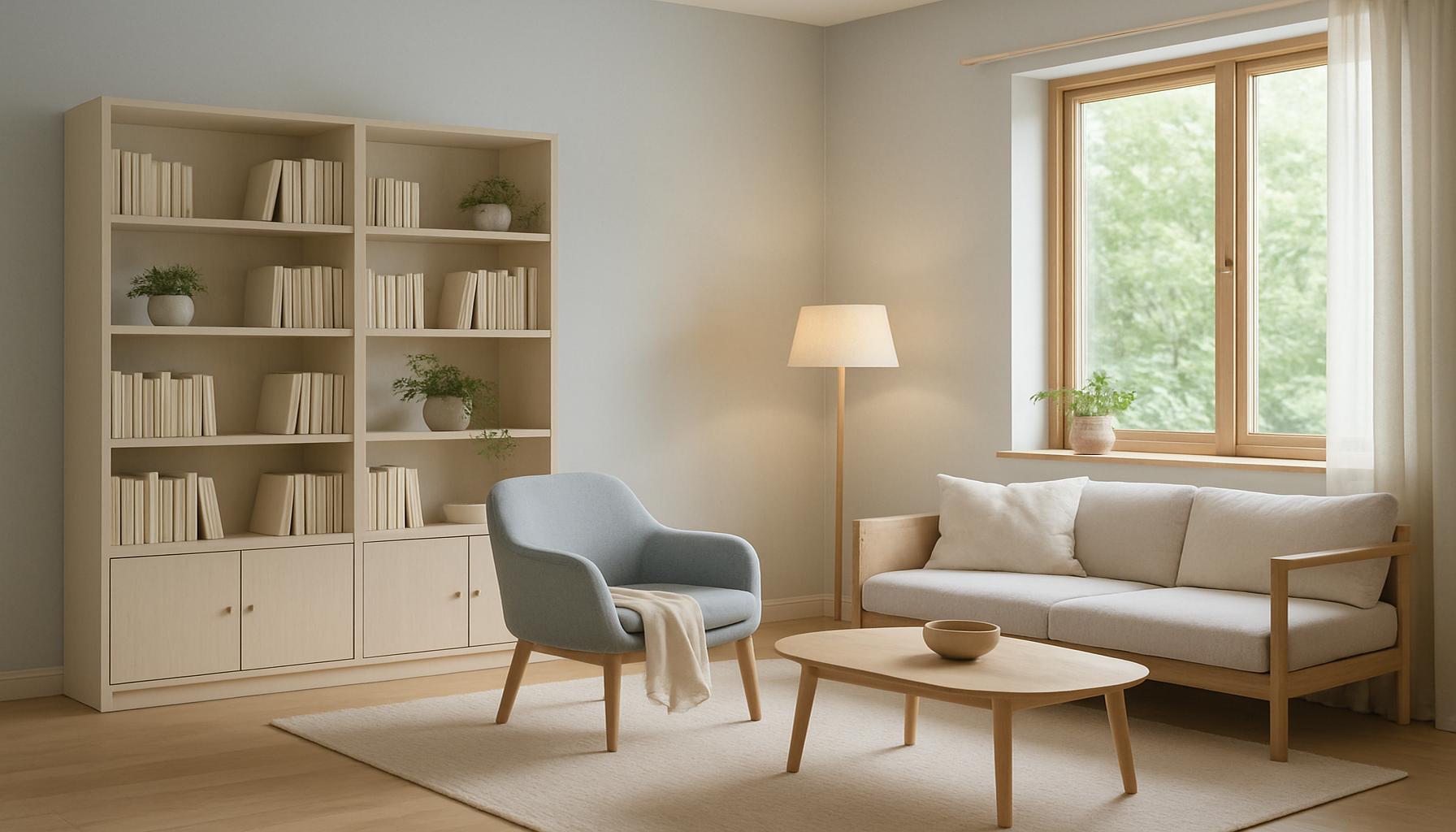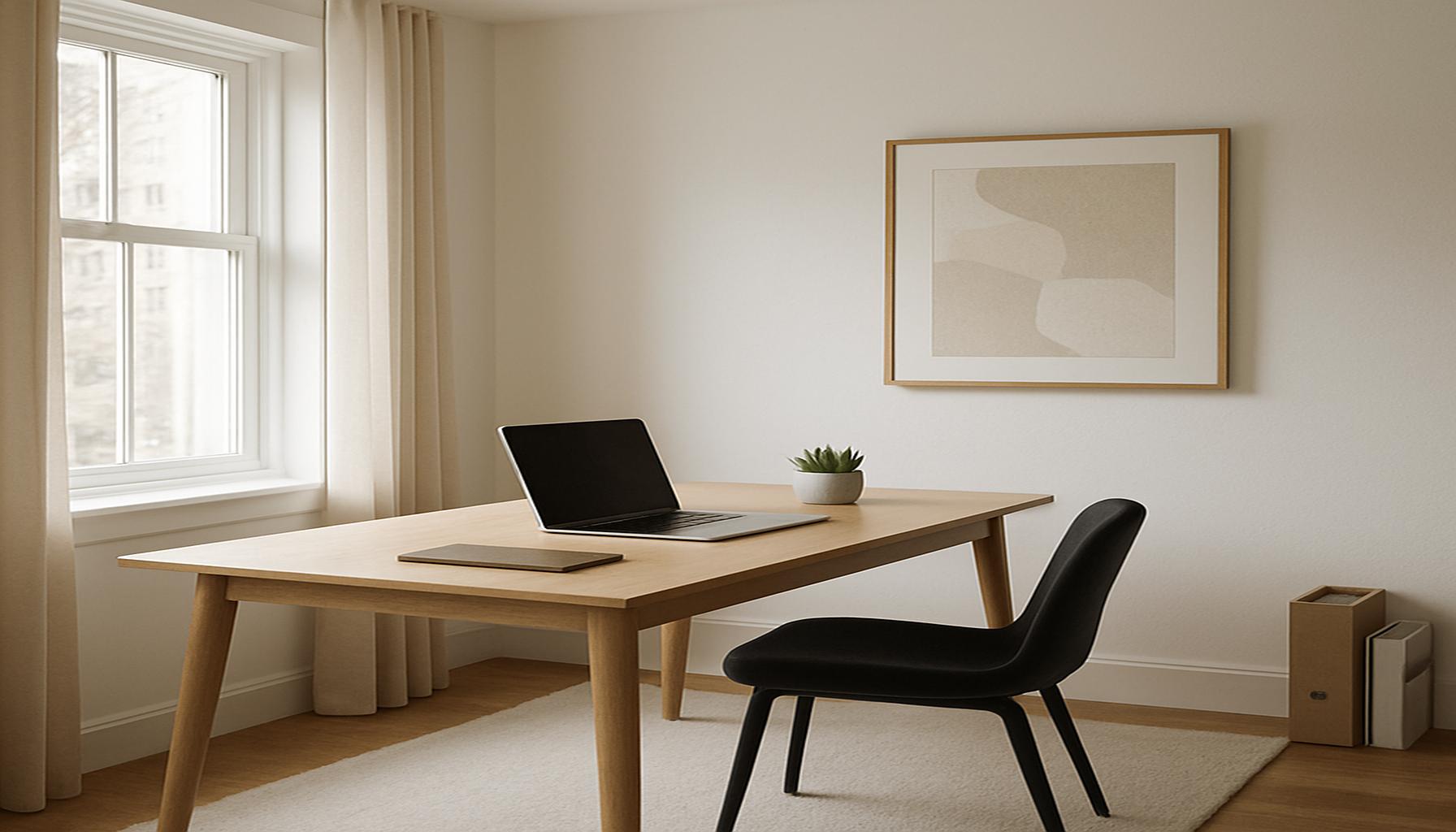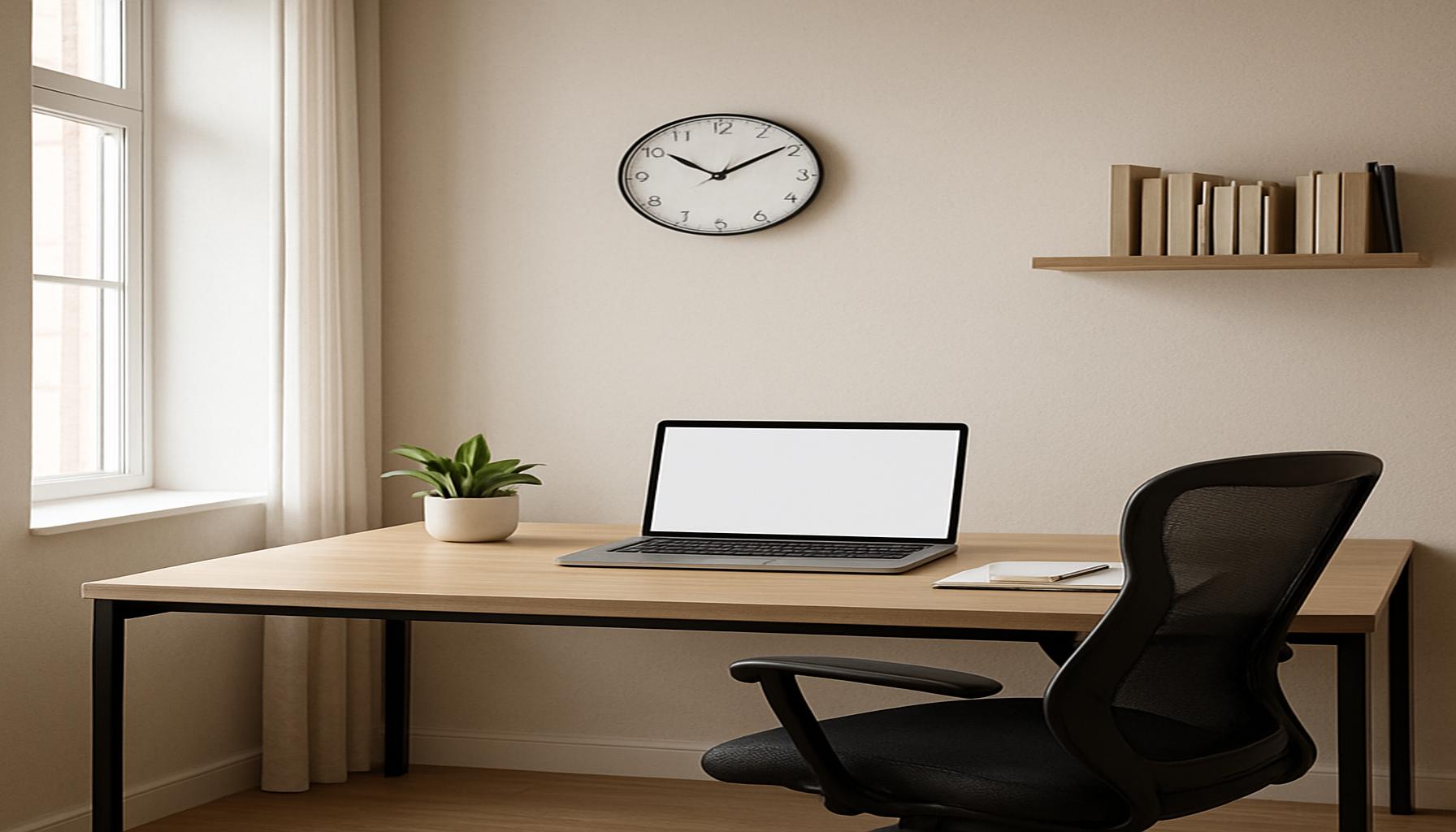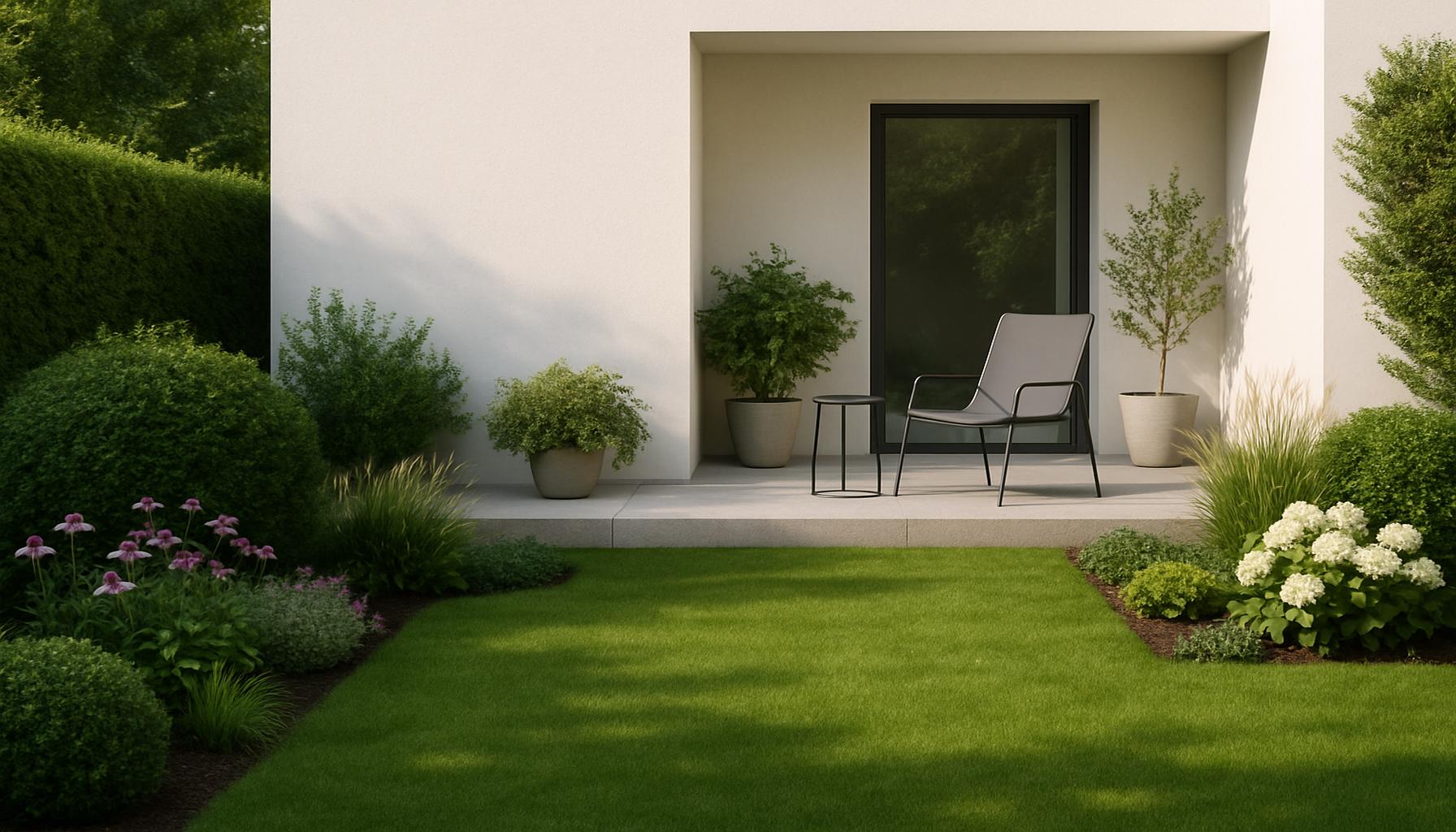Strategies to Reduce Spatial Disorder and Promote Serenity at Home

Understanding the Impact of Your Living Environment
In today’s fast-paced world, spatial disorder can quickly morph into overwhelming chaos within our homes. This disruption not only affects our physical surroundings but also our mental well-being. The state of our living spaces plays a pivotal role in shaping our moods, productivity, and overall quality of life. By fostering an environment of tranquility, we can counteract the stresses of modern life and promote a sense of calm.
One of the most effective techniques to achieve a serene home environment is through decluttering. This process involves regularly evaluating your belongings and removing items that no longer serve a purpose or bring you joy. Consider approaching decluttering with a systematic strategy, such as the “one in, one out” method, where every new item brought into your home requires the removal of an existing item. Engaging in this practice not only helps to create physical space but also encourages a mindful approach to consumption. For instance, after a holiday season filled with gifts, set aside time to evaluate each item’s sentimental or functional value.
Beyond decluttering, establishing organizational systems tailored to your lifestyle can significantly enhance the harmony of your living space. Incorporating storage solutions like labeled bins, drawer organizers, and wall-mounted racks can create designated areas for everything, which minimizes the chaos of scattered items. For instance, in a busy family household, dedicating a specific spot near the entrance for shoes, bags, and keys can streamline daily routines and reduce stress. Additionally, utilizing vertical space by installing shelves can help maximize smaller areas—making the home feel more open and inviting.
Creating Inviting Meditative Spaces
Another strategy to promote serenity is through the creation of meditative spaces. These quiet nooks can serve as personal retreats within your home, conducive to relaxation and mindfulness practices. Transform a corner of your living room or a section of your bedroom into a peaceful getaway with cozy cushions, warm lighting, and perhaps a small indoor plant. Engage your senses by incorporating soothing elements such as scented candles or soft instrumental music. Having a designated area for introspection can not only help you recharge during moments of stress but also enhance your overall well-being.
By addressing the physical disorder in your home, you open the door to greater serenity. This renewed sense of peace can improve your comfort levels, elevate your productivity, and enhance focus on daily tasks. As you explore these different techniques, take the time to personalize your space in a way that reflects your unique preferences and lifestyle. Utilize colors, textures, and decor that resonate with you, inviting joy and comfort into your everyday life.
With the right tools and knowledge, transforming your home into a serene sanctuary is within reach. Embrace these strategies and invest time into creating a space that promotes harmony and well-being. Discover the profound impact a thoughtfully designed home can have on your life and consider the ways you can foster tranquility within your surroundings.
DISCOVER MORE: Click here to enhance your productivity
Maximizing Space: Techniques and Tools for Organization
Creating a serene living environment begins with an organized space that works for you. Effective organization transcends mere aesthetics; it actively enhances your mental clarity and keeps distractions at bay. The key lies in recognizing the myriad of tools and practices available to bring harmony to your home. Below are some strategies that can significantly reduce spatial disorder and encourage peace of mind.
Implementing Smart Storage Solutions
Storage solutions are paramount in the quest for a clutter-free home. Implementing smart storage options serves as the foundation for an organized life. Here are a few smart storage solutions to consider:
- Under-Bed Storage: Utilize containers or drawers that slide under beds to store out-of-season clothing or extra linens, maximizing space without crowding your living areas.
- Multi-Functional Furniture: Look for furniture pieces that double as storage, like ottomans that open up for hidden compartments or coffee tables with shelving underneath. This design allows you to keep essentials close while maintaining a clean appearance.
- Vertical Storage: As space becomes an issue, think upwards. Install tall bookshelves or wall-mounted cube organizers to free up precious floor space and draw the eye upwards, creating an impression of larger areas.
- Drawer Dividers: Keep utensils, tools, or accessories neatly arranged with drawer dividers to simplify access and encourage tidiness. An organized drawer can redefine your morning routines by making essentials easy to find.
By being strategic about your storage options, you not only reclaim space but also create a fluid motion in your daily processes, minimizing time spent searching for misplaced items. In a world dominated by distractions, a well-organized environment can serve as a breath of fresh air, offering clarity and composure.
Establishing Routines for Maintenance
Having a beautifully organized home is one thing; maintaining that order is quite another. Establishing routines dedicated to cleaning and organizing can make all the difference in keeping spatial disorder at bay. Here are a few essential maintenance practices:
- Daily Tidying: Dedicate 10-15 minutes each day to tidy up. Pick up scattered items, straighten up rooms, and wipe surfaces to keep disorder from accumulating.
- Weekly Declutter Sessions: Select one area to declutter each week. Whether it’s a closet, drawer, or garage, breaking the task into smaller segments makes it less daunting.
- Seasonal Reviews: Twice a year, evaluate your belongings. This practice not only emphasizes decluttering but also promotes a cycle of bringing in fresh items while letting go of those that no longer serve you.
Implementing these maintenance routines requires minimal effort, yet their impact can be profound. By continuously keeping your space in check, you’ll create a living environment that genuinely supports your emotional and mental well-being.
Ultimately, as you integrate these organizational strategies into your home life, you’ll find that a serene environment is more than an aesthetic. It is a lifestyle choice that promotes happiness, focus, and peace. Unlock the potential of your living environment by committing to these practices, paving the way for a tranquil and engaging space. Your journey to serenity starts with an organized mindset!
| Category | Key Features |
|---|---|
| Decluttering | Involves removing unnecessary items to create a more open space. |
| Mindful Organization | Arranging belongings thoughtfully to enhance tranquility and accessibility. |
By implementing effective strategies to reduce spatial disorder, homeowners can significantly elevate their sense of serenity within their living environments. One of the primary methods is decluttering, which not only eliminates visual chaos but fosters a more peaceful mindset. The process of identifying and letting go of items that no longer serve a purpose can be liberating, encouraging mindful living.Furthermore, mindful organization enhances this serenity by promoting a sense of order. Arranging belongings in a thoughtful manner allows for easier access to frequently used items while creating designated spaces that serve specific functions, thereby minimizing confusion and stress. By adopting these methods, individuals can transform their homes into havens of tranquility, leading to an improved quality of life. Engaging in these practices could ignite a newfound motivation to explore even more ways to cultivate a serene and organized home environment.
DON’T MISS: Click here to discover effective minimalist planning
Creating a Calming Atmosphere: Design Elements and Practices
While organization is critical to reducing spatial disorder and fostering serenity, the overall ambiance of your home plays an equally significant role. A calming atmosphere encourages relaxation and promotes mental well-being. Here are some design elements and practices essential for cultivating tranquility in your living space.
Choosing a Soothing Color Palette
The colors that adorn your walls and decor significantly influence your mood and mental state. Opting for a soothing color palette can create a sense of calm. Consider the following tips for selecting colors:
- Pale Blues and Greens: Soft shades of blue and green are known for their calming effects, reminiscent of nature and open skies. These colors can promote relaxation and help reduce anxiety.
- Neutral Tones: Shades of beige, grey, and cream provide a versatile backdrop for any design style. These tones create a serene atmosphere by maintaining a clean and uncluttered visual plane.
- Accent Colors: Subtle pops of color through artwork or decorative pillows can invigorate a space without overwhelming it. Opt for soft pastels rather than bold or bright hues.
When selecting colors, consider the impact they have on your emotions and aim for a harmonious blend that creates a nurturing environment. This attention to detail contributes significantly to a serene home.
Incorporating Natural Elements
Bringing nature indoors is an effective strategy to foster tranquility. Nature has been shown to reduce stress and enhance well-being. Here are some ways to incorporate natural elements:
- Indoor Plants: Adding greenery not only improves air quality but also enhances aesthetic appeal. Choose low-maintenance options, such as succulents or snake plants, for those needing easy care.
- Natural Light: Maximize the use of natural light by opening curtains and shades during the day. Sunlight has mood-enhancing properties and creates a bright, inviting atmosphere.
- Natural Materials: Use furniture and decor made from natural materials like wood, stone, or cotton. These elements add texture and warmth, making your home feel more inviting.
Integrating nature into your home not only enhances visual beauty but also supports your mental well-being by bringing a piece of the outside world into your living environment.
Creating Dedicated Spaces for Mindfulness
A critical aspect of promoting serenity at home is establishing areas dedicated to relaxation, mindfulness, and personal peace. Here are ideas to inspire these sanctuaries:
- Meditation Corners: Designate a quiet nook for meditation or relaxation. Use cushions, low lighting, and calming scents to create an inviting atmosphere that encourages mindfulness practices.
- Reading Nooks: A cozy reading corner can serve as an escape from daily distractions. Create an inviting spot with bookshelves, a comfortable chair, and good lighting to foster moments of peace.
- Outdoor Spaces: If you have access to a balcony or garden, utilize it as a sanctuary. Adding comfortable seating, plants, and soft lighting can transform it into a haven of tranquility.
Incorporating these dedicated spaces promotes a mindful lifestyle and reinforces the experience of serenity at home. As you create these sanctuaries, you encourage yourself and family members to prioritize mental well-being. By focusing on the details of design and atmosphere, you can embrace a lifestyle that values peace, calm, and clarity amid the busyness of everyday life.
DIVE DEEPER: Click here to discover more
Conclusion: Embracing Serenity Through Thoughtful Design and Organization
In a fast-paced world filled with distractions and constant stimuli, creating a sanctuary at home becomes essential for fostering peace and mental well-being. By implementing strategies to reduce spatial disorder and promote serenity, you can transform your living space into an oasis of calm. Organization lays the foundation for tranquility, enabling you to navigate your home comfortably without the burden of clutter. Pairing this with intentional design elements—such as a soothing color palette, natural materials, and adequate lighting—enhances the ambiance of your space, allowing for relaxation and rejuvenation.
Integrating natural elements like indoor plants and fresh air promotes a connection to the outdoors, which can improve your mood and overall emotional health. Additionally, establishing dedicated areas for meditation, reading, or unwinding cultivates mindfulness and invites moments of peace amidst the chaos of daily life. These special nooks not only serve as physical spaces for reflection but also as reminders to prioritize your mental well-being.
Ultimately, your home should reflect the serenity you wish to experience—a place that nurtures you. By embracing these strategies, you invite clarity and calm into your everyday life, proving that the right environment can have a profound effect on your mental state. As you embark on this journey to cultivate serenity at home, remember that small, intentional changes can lead to significant transformations. Explore and experiment with these techniques, and watch as your living space evolves into a harmonious retreat tailored perfectly for you.


